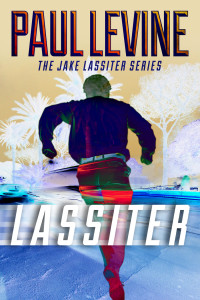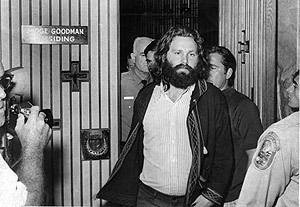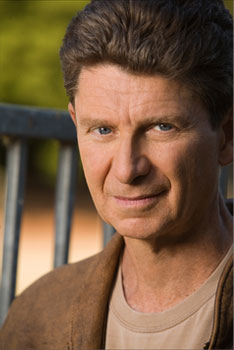By Paul Levine
Mystery writers are hit with this question all the time. “Where do you get your ideas?”
“I steal them,” I usually reply.
Sounds flippant, but it’s true. I’ve often stolen – or borrowed – real people and events for my fictional legal thrillers. My first novel, “To Speak for the Dead,” involved a physician charged with killing a patient with an injection of succinylcholine, a drug that paralyzes the lungs. Pretty inventive…except a Florida doctor had been convicted of killing his wife just that way 25 years earlier.
In real life, the doctor was sentenced to life in prison but was paroled after serving 12 years. So, in Florida, it seems, a horrific premeditated spousal homicide will get you a neat dozen years.
My path to joining the ranks of mystery writers started with covering the courts, then practicing law for 17 years. After a first stint writing legal thrillers, I spent several years working in television (“JAG,” “First Monday”) where one of my great pleasures was writing dialogue for James Garner and Charles Durning, the Chief Justice and Senior Associate Justice of the Supreme Court in our fictional world).

As for my fictional justice system, it’s a place teeming with incompetence, corruption, and wackiness. That stems from real life, too. Mine.
A week after graduating from Penn State, I started work as a criminal court reporter with The Miami Herald. Unfortunately, having never been in a courtroom, I didn’t know habeas corpus from an bottlenose porpoise. A prosecutor took pity, showed me around, and taught me a few Latin expressions. (“Mero Motu,” it turns out, is not a greeting in Tokyo, but rather an act undertaken on the court’s own motion).
While covering the courts, I began having lunch with the prosecutor and two of his colleagues. They wowed me with their war stories, singing paeans to the majesty of the law and the high calling of public service. So sure enough, I went to law school, and my three prosecutor pals became judges. Now, flash forward 20 years. Those judges must be deans of the profession, right? Nope. All three are in federal prison, convicted of bribery, one of them for “selling” the name of a confidential informant so the defendant could arrange his murder.
Is It Any Wonder Mystery Writers Get Cynical?
So is it any wonder that I’m cynical about the halls of justice, where as Lenny Bruce once complained, the only justice is in the halls? Is it a surprise that judges in my books tend to be myopic, forgetful, and occasionally crooked? (One judge, in a lame-brained attempt to be fair, simply alternates rulings on objections. “Sustained.” “Overruled.” “Sustained.” “Overruled.”)
But back to the Miami courthouse in 1970 where, as a fledgling reporter, I also made friends with the Courthouse Gang, a multi-ethnic posse of retirees who showed up every day for the free entertainment. My buddies all knew a good story and invariably guided me to the right courtroom and filled me in on testimony I missed. The Gang lives on in fiction, as mystery writers love colorful characters.
Myron (The Maven) Mendelsohn, Teresa Toraño, and Cadillac Johnson use their unique skills to help the squabbling lawyers in my “Solomon vs. Lord” novels.
Another fascinating real trial found me interviewing aging mobster Meyer Lansky, who was charged with bringing through Customs personal ulcer medication for which he didn’t have a current prescription. In the law, the technical name for that charge is “chicken-shit harassment.”
My interviews of Lansky basically consisted of me asking him questions and him asking if I wasn’t too young to be a reporter. He seemed to be a courtly old gentleman, and I stole (“borrowed”) that part of his personality to create Max Perlow, the aging Miami gangster in “Lassiter.”
As a young man, Perlow worked in a pre-Castro Havana casino for…Meyer Lansky. (Mystery writers also make things up).

The last trial I covered as a reporter was a doozy. Jim Morrison, lead singer of The Doors, was charged with indecent exposure for exposing himself at a Miami concert. One of the prosecutors was a mini-skirted former beauty queen named Ellen Morphonios, renowned for her ribald sense of humor. Just before opening statements, Ellen told me her trial strategy: “I’m gonna have the clerk stamp that dirtbag’s equipment and call it ‘State’s Exhibit One.’” Hey, you don’t hear that on CNN.
Morrison was convicted, then died at age 27 in Paris while the case was on appeal. While no autopsy was performed, speculation has long been that Morrison died of a heroin overdose. (Wikipedia relates several conflicting accounts of the singer’s death).

Courtrooms may look like churches, trimmed with mahogany and exuding an air of solemnity. And sure, some proceedings are deadly dull, but there’s a surprising amount of humor between bench and bar.
In my first year practicing law, I tried a case before a colorful old judge named Frederick Barad. I thought I was doing great, but in closing argument, I noticed that a juror was sound asleep.
“Your Honor,” I whispered, gesturing toward juror number three, who was snoring loudly.
“What do you want from me?” the judge replied. “You put him to sleep. You wake him up.”
The courtroom has been keeping me awake – and entertained – for nearly four decades. These days, my job is to pass that along to readers.
For more information about my “Jake Lassiter” and “Solomon vs. Lord series, please visit my Amazon Author Page.
Finally, I’ve been tossing around the term “mystery writers” interchangeably with “thriller writers.” Technically there are differences, but that’s a subject for another day. For what it’s worth, Wikipedia lists me as a “major author” (hooboy!) of legal thrillers and a mystery novelist.


